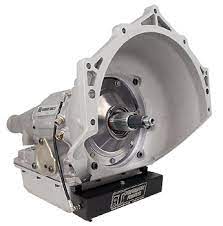The Legacy of Powerglide in Modern Transmissions
The legacy of the Powerglide transmission extends beyond its historical significance as one of the earliest automatic transmissions. While it is no longer in production, its influence can be seen in various aspects of modern transmissions. Here are some key ways in which the Powerglide’s legacy lives on in modern transmissions:
1. Simplicity and Durability: The Powerglide was praised for its simple design and robust construction, which contributed to its durability and reliability. This emphasis on simplicity and durability has carried over to modern automatic transmissions. Many modern transmissions, especially those designed for heavy-duty applications, continue to prioritize durability by utilizing strong materials and straightforward designs.
2. Two-Speed Transmissions with Overdrive: The Powerglide’s two-speed design, while considered limited by today’s standards, served as a foundation for the development of transmissions with overdrive gears. Overdrive gears allow engines to operate at lower RPMs during highway driving, improving fuel efficiency and reducing engine wear. The concept of overdrive was derived from the idea of adding extra gears to the Powerglide’s basic two-speed setup.
3. Torque Converters: The Powerglide transmission used a torque converter, a type of fluid coupling, to transfer power from the engine to the transmission. Modern automatic transmissions also utilize torque converters, albeit with refinements and improvements. These torque converters have evolved to provide smoother engagement, better efficiency, and improved lock-up mechanisms for reduced slippage and improved fuel economy.
4. Historical Impact on Automatic Transmissions: As one of the earliest successful automatic transmissions, the Powerglide paved the way for the widespread adoption of automatic transmissions in the automotive industry. Its popularity helped to solidify the demand for automatic transmissions, leading to the development and refinement of more sophisticated and efficient automatic transmission technologies in modern vehicles.
5. Performance and Racing Applications: The Powerglide’s reputation for durability and performance made it a favorite choice for drag racing and high-performance applications. This legacy can still be seen today in the continued use of automatic transmissions in racing and performance vehicles. Modern automatic transmissions have evolved to include advanced electronic controls and multiple gears, enhancing their performance capabilities. You can also lookout for turbo 400 transmission.
6. Historical Collectibility: Due to its association with classic cars and the nostalgia surrounding the early days of automatic transmissions, the Powerglide remains a sought-after and collectible item among automotive enthusiasts. This appreciation for vintage technology has contributed to the continued interest in classic cars and their respective transmissions.
While the original Powerglide transmission is no longer in production, its legacy lives on in the design principles, technologies, and historical impact it had on the automotive industry. The Powerglide’s influence can be observed in the continued evolution and improvement of modern automatic transmissions, which offer enhanced efficiency, performance, and convenience for today’s drivers.
Innovation in Automatic Transmissions: The Powerglide transmission was a significant innovation in its time, providing a viable alternative to manual transmissions and revolutionizing the driving experience for many consumers. This spirit of innovation has carried forward into the development of modern automatic transmissions. Automakers continue to invest in research and development to create more advanced and efficient automatic transmission systems, incorporating electronic controls, adaptive shifting algorithms, and optimized gear ratios.
Improved Shift Quality: While the original Powerglide was a two-speed transmission, modern automatic transmissions have evolved to offer multiple gears. The use of additional gears, such as 6-speed, 8-speed, and even 10-speed transmissions, has greatly improved shift quality and overall performance. With more gear ratios, modern automatics can better match engine power and torque to driving conditions, resulting in smoother and more precise shifts.
Electronic Controls and Adaptability: The Powerglide transmission relied on hydraulic principles for its operation, but modern automatic transmissions have integrated sophisticated electronic controls. Electronic Control Units (ECUs) analyze data from various sensors to optimize gear shifts, taking into account factors like vehicle speed, engine load, throttle position, and driver behavior. This adaptability ensures that modern transmissions deliver optimal performance and efficiency in diverse driving situations.
Continuously Variable Transmissions (CVTs): Although the Powerglide was a conventional automatic transmission, its legacy has also influenced the development of Continuously Variable Transmissions (CVTs). CVTs offer an infinite number of gear ratios, allowing the engine to operate at its most efficient RPM continuously. This concept of continuously varying the gear ratio for optimal efficiency is a natural progression from the early automatic transmission technologies.




